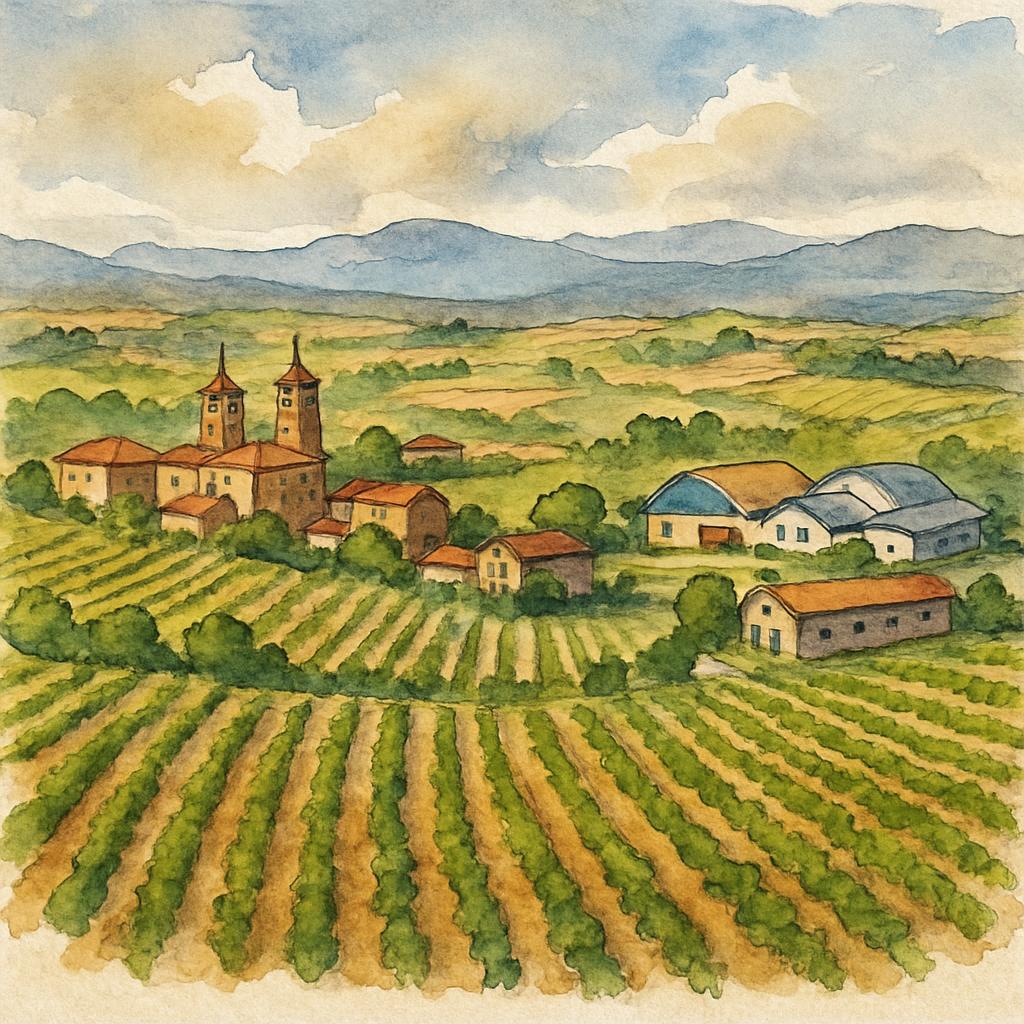Terroir of Logroño
Logroño enjoys a unique blend of Atlantic and Mediterranean climates, characterized by warm, dry summers and chilly winters, with significant diurnal temperature variations. This climate helps maintain vibrant acidity in the wines. The region's moderate rainfall, primarily in spring and autumn, supports healthy vineyard growth.
The diverse soils around Logroño contribute to the complexity of its wines. On the upper slopes, clay-limestone and gravel encourage deep root systems and intense flavor development. Near the Ebro River, fertile alluvial loams and sands can lead to higher yields, requiring careful management to avoid overly soft wines.
Unique micro-terroirs, featuring marl and river cobbles, add further complexity. This "Atlantic-touched continental" climate, along with limestone-rich soils, distinguishes Logroño from the hotter eastern Rioja, resulting in wines with high acidity and robust structure.
Notable Wineries in Logroño
Logroño, a vibrant hub in La Rioja, is a treasure trove of some of Spain's most notable wineries. Nestled in this historic city, these estates blend tradition with modern innovation, contributing to the region’s global wine reputation.
- Bodegas Franco-Españolas: Established in 1890, this downtown icon offers classic Rioja wines known for their aging potential.
- Marqués de Murrieta: Since 1852, this estate has set the benchmark with its landmark château and the prestigious Castillo Ygay Gran Reserva.
- Campo Viejo: Known for its fruit-forward Crianza and Reserva wines, this modern winery showcases contemporary wine production.
- Bodegas Ontañón: A family-run winery, it uniquely combines winemaking with art in its captivating cellar.
Logroño serves as a gateway to explore nearby esteemed estates, making it a perfect starting point for any wine enthusiast's journey through Rioja.
Sustainable Winemaking in Logroño
In Logroño, sustainability is a guiding principle in winemaking. Wineries integrate eco-friendly practices, such as using cover crops to prevent erosion and employing integrated pest management to minimize chemical use. Drip irrigation systems, combined with water-recycling in cellars, conserve precious resources. Energy efficiency is a priority, with many wineries installing solar panels, utilizing gravity-flow systems, and aging wine underground to maintain optimal temperatures naturally.
Both large producers and small family-run bodegas in the region are committed to caring for their vineyards with an eye toward the future. This blend of traditional and innovative methods ensures the health of the land and the quality of the wines. Through these efforts, Logroño not only upholds its reputation for producing exceptional wines but also sets an example in sustainable viticulture.
Wine Tourism in Logroño
Logroño is the heart of Rioja wine tourism, offering an immersive experience into the rich culture and history of wine. The city's Calle del Laurel bustles with pintxo bars where locals and visitors enjoy Rioja wines alongside flavorful tapas. Key cultural sites like Espacio Lagares and the Museo de La Rioja provide insights into the region’s winemaking heritage.
The well-marked wine route from Logroño connects to renowned towns and wineries such as Haro and Briones, each offering unique wine experiences. The Camino de Santiago intersects scenic vineyards, enhancing the region's allure. Tour operators provide diverse itineraries, including visits to vineyards and participation in the vibrant September harvest festival. With excellent transport links and accommodations, Logroño is an ideal base for wine exploration.


